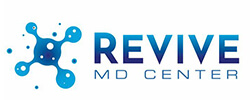Regenerative Medicine
Revive MD Center specializes in Regenerative medicine and uses it to treat a variety of conditions. We gave been providing Regenerative therapies since 2019. Learn more about Regenerative and Anti Aging medicine Richmond VA below and then consider scheduling a consultation with Revive MD Center.

Why Are People So Excited About Regenerative Medicine?
Regenerative medicine Richmond VA is viewed as a new and exciting way to treat musculoskeletal conditions. The treatment allows the body to regenerate itself naturally. It has managed to enter the spotlight for two reasons. First, many people have experienced results, and they are sharing their experiences with friends and family members. Second, high-profile athletes use regenerative medicine to get back on the field or court faster.
Athletes that have used regenerative medicine include Hines Ward, Tiger Woods, and Rafael Nadal. While the athletes get the attention, regenerative medicine isn’t reserved for sports players. Countess men and women have undergone treatment for various injuries and conditions as well. This includes middle-aged and elderly men and women who want to improve pain symptoms and ease of movement while avoiding invasive medical procedures.
The Regenerative Medicine Revolution
When applied to the joints, regenerative medicine treatments show great promise for combatting the effects of osteoarthritis and helping many older patients stay active without joint pain.

Regenerative Biologics Therapy
Tissue repair injections using biologics and Stem cell therapy is one aspect of Regenerative and Integrative Medicine Richmond VA. While it’s getting lots of exposure lately, this is not a new medical treatment. Stem cell therapy has been used for pain management and the treatment of conditions for more than seven decades.
Revive MD Center is dedicated to studying and researching the impact and many benefits of stem cell therapy. That includes staying on top of the latest developments, including using mesenchymal derived biologics from placental tissue. The fluid’s membrane has proven effective for speeding up the healing process for wounds. The fluid is also used to treat ligament injuries, arthritis, and other musculoskeletal conditions. Revive MD Center continues to study the benefits of amniotic fluid in a clinical setting and is happy to share the results with patients.
New Innovative Approaches to Accelerating Healing
Regenerative Healthcare: Platelet Rich Plasma (PRP) Therapy
Platelet-Rich Plasma (PRP) is a regenerative medicine procedure that involves utilizing the liquid portion of your blood to accelerate the healing process. The procedure itself is accomplished by having tube(s) of blood collected from the patient that is spun down at a precise speed in a centrifuge that allows for the separation of the plasma from the red blood cells that concentrates them into an injection for healing. Plasma is the liquid portion of your blood that is composed of protein, water, and thrombocytes that aid in blood clotting and healing.
When made into an injection, PRP can be used to alleviate joint and muscle pain, tendinitis, trigger points, sprains, strains, and conditions including osteoarthritis, carpal tunnel syndrome, anti aging, skin rejuvenation and even hair loss.
The platelets release growth factors into the muscle, tendon, joint, and other target tissue, encouraging cell repair and renewal. The theory is that with PRP injections, the platelet-rich plasma triggers and encourages the body’s natural healing process. This is why this treatment falls under the category of regenerative medicine. PRP injections are an excellent choice for those looking for minimally invasive recovery from the damaging effects of chronic inflammation and arthritis.
Revive MD Center draws blood and then uses a centrifuge to separate the platelets. Platelets facilitate the regeneration of tissue and decrease inflammation and alleviate pain. Studies have proven the effects of PRP, including a 2012 study conducted by the Hospital for Special Surgery. Researchers studied the impact of PRP on knee arthritis and saw promising results. Another study was done on animals with damaged Achilles tendons. PRP injections alleviated stiffness while increasing fast-twitch responses and strength. This is just some of the research related to PRP therapy, and the results are evident. This treatment is ideal for a variety of conditions.


Regenerative Healthcare: Human Tissue Allograft Treatments
Regenerative medicine consists of human tissue cellular allografts taken from the placenta and umbilical cord after a live, healthy birth. These tissues are donated by mothers who elect to be in the program. The donated tissue is tested in an FDA registered lab, stored cryogenically until practices such as ours order the tissue.
When injected into a damaged or deteriorated joint, the allograft stimulates the body to repair the damaged tissue resulting in a reduction of inflammation, improved cushioning, and improved function.
Safe Alternative
Human tissue allograft treatments are natural and carry no chance of rejection given they are “immune privileged.” This means they have no immune cells and bear no risk to the patient. In most cases, there is also little to no down time and other than a few modifications, most patients go right back to their typical daily life. Regenerative medicine works great for acute and chronic conditions in any joint or associated soft tissue.
Benefits of Regenerative Medicine
⦁ Minimally invasive
⦁ No adverse effects
⦁ No chance of rejection
⦁ No down time
⦁ Much safer than surgery


Umbilical Cord Tissue
Umbilical cord therapy is one of the most exciting aspects of Regenerative Medicine. Revive MD Center ethically receives tissue from donors who have scheduled C-sections. The tissue is only donated when both the baby and the mother are healthy, and Revive MD Center does not use any embryonic stem cells.
The umbilical cord tissue is sent to an FDA-certified facility, which uses GMP techniques to process it with amniotic fluid and Wharton’s Jelly. Then, Revive MD Center uses the tissue for treatments that involve stem cells, microRNA, cytokines, exosomes, and growth factors. Patients have enjoyed impressive results, such as breathing easier, a boost in energy levels, and an increase in mobility. Since there have yet to be any documented significant adverse effects, this is deemed a satisfactory way to treat various conditions.

Tissue Repair Injection for Regenerative Therapy
Biologics therapy is one of the most popular forms of regenerative medicine due to its potential. Exosomes are extracellular vesicles instead of cells, and they have the power to communicate with other cells, positively impacting the aging process.
Cells, including stem cells, release exosomes to communicate with other cells. Exosomes contain information, such as microRNA and DNA. After the cell releases the exosome, it connects with another cell and transfers the information. This information can be used to reprogram the cell.
Exosomes do not have surface factors, so rejection isn’t likely. Also, exosomes do not divide and multiply, so there has not been any evidence of them causing tumors. Because they are deemed safe and effective, exosomes are used for both esthetics and pain relief. As more research is done, Revive MD Center expects exosomes to be used in other aspects of Regenerative and Integrative Medicine Richmond VA.
Frequently Asked Questions
What is the purpose of regenerative medicine?
Regenerative medicine is used to repair and regenerate tissue damage. This includes cartilage, ligaments, tendons, and bones. When people develop musculoskeletal injuries, they normally go through pain management that includes prescription medications. While pain management masks the pain, it does not heal the injury. For instance, corticosteroid injections reduce pain and inflammation but do not speed up the recovery process. Once the injections wear off, the patient may still be injured, and the pain could come back.
Instead of providing a band aid solution like pain management, regenerative medicine repairs the tissue. Stem cells and platelets jump-start the body’s natural healing process. Patients can actually improve after regenerative medicine treatment.
What are stem cells, and what makes them special?
Stem cells are essentially blank slates and are classified as hematopoietic and non hematopoietic. They can differentiate into various cell types, such as cartilage, tendon, bone, skin, or red blood cells. Stem cell therapy uses stem cells to increase the number of specialized cells needed to repair soft tissue or bone. By boosting the number of specialized cells, the recovery time is shortened.
What types of stem cells are there?
Stem cells are divided into two categories, which are unlimited and limited. Unlimited stem cells (embryonic stem cells) can turn into any type of cell. Specialists can replicate the cells outside of the body and then inject them to treat conditions. We do not use any embryonic stem cell products at Revive MD Center.
Limited (adult) stem cells cannot be replicated outside of the body, so physicians transplant them after extracting them or freeze them for later use. Adult mesenchymal stem cells (MSC) are harvested from health donors and processed under strict regulatory guidelines in FDA cleared facilities. Our center only uses adult MSC products to include amniotic and umbilical’s cord products. Hence none of them are considered controversial. Known as the “products of conception”, the regenerative materials from amniotic and umbilical tissue include the following:
- Amniotic Fluid
- Placental membrane
- Umbilical Cord Tissue
- Umbilical Cord Blood
- Wharton’s Jelly
The exact function of these materials supporting growth and health of the fetus is outside the scope of this guide. However, understand that a lot of the functions provided during fetal growth translate into patient benefit during regenerative procedures such as preventing infection and tissue growth of all types such as collagen, tendon, lung, kidney, heart, etc.
Research performed on the products of conception have shown several benefits to what the materials contain including:
- High numbers of Stem Cells
- Concentrations of Growth Factors
- High numbers of Cytokines
Additional elements including exosomes, microsomes, secretomes, mRNA.
The best analogy applicable is that the products of conception produce regenerative materials that contain a full “orchestra” of components to treat patients!
Note: You may see competitor marketing materials that state “products of conception” do not contain live cells. This is true if the biologics are radiated during processing or contain too much preservative. But it is not true if the materials have been processed without significant radiation or preservatives. This is why we are VERY careful about the labs we work with so patients receive products that are safe and of the highest quality to produce the best outcomes possible!
Do physicians use regenerative medicine in their practices?
Absolutely. Countless pain management and orthopedic practices have embraced regenerative medicine.
Are these products FDA approved?
No they are not. They are not regulated as drugs, rather they fall into the biologics category. These are regulated heavily by the FDA, but do not get approved or denied. Here is how the FDA regulates things:
Medical devices – joint implants, screws/rods, DME, etc. In the world of regenerative medicine, this only applies to the kits used in PRP, bone marrow or adipose procedures.
Drugs – think of Lipitor, Vicodin, Viagra, etc. These are medications that have gone through a clinical trial and been approved for a specific indication.
Biologics – the FDA strictly regulates how biologic materials are acquired, processed, stored and used under the CFR Part 1271. Amniotic and umbilical materials fall under this category, which does not involve an Approval/Denial process like drugs do.
Specifically, the section under Part 1271 that applies to amniotic/umbilical tissues is Section 361 products, which are not required to be licensed or approved by the FDA and are regulated under Section 361 of the Public Health Service (PHS) Act.
Is one type of stem cell better than the other?
Theoretically the answer is yes. However, it’s currently not clinically relevant. Embryonic stem cells are pluripotent and can differentiate into over 200 cell types.
However, there are ethical concerns over how they are obtained, and also the cells themselves often do not know when to stop replicating. This can form tumors.
The non-embryonic adult mesenchymal stem cells obtained from one’s bone marrow, amniotic fluid or umbilical cord can still differentiate into several important cell types, but not 200.
This is called being Multipotent and able to turn into cartilage, muscle, tendon,ligament and most vital organ cells. Multipotent stem cells have not been shown to form tumors like the pluripotent variety.
What type of procedures are available for Stem Cell Therapy?
Procedures available for stem cell therapy include localized or IV injection with amniotic or umbilical cord derived stem cell therapy.
The procedures are all performed as an outpatient, with each procedure taking less than an hour. With the amniotic or umbilical cord therapy, the fluid is obtained from consenting donors after a scheduled C-section. Then it is processed at an FDA regulated lab and cryogenically frozen and thawed out right before use.
Clinics use regenerative medicine to treat a variety of conditions, including arthritis, tendonitis, cartilage defects, diabetic neuropathy, fractures, hair loss and aging. The practitioners treat these conditions with platelet-rich plasma therapy, amniotic-based stem cell-rich injections and umbilical cord derived stem cell injections.
Have scientific studies proven the effectiveness of regenerative medicine and musculoskeletal conditions?
Large-scale scientific studies still must be conducted regarding regenerative medicine and musculoskeletal conditions. However, researchers have conducted several small studies with animals and humans as subjects. The results of these studies have been positive. The results support the hypothesis that Regenerative and Integrative Medicine Richmond VA is key to improving musculoskeletal conditions.
Does insurance cover stem cell therapy and other regenerative procedures?
Most insurance policies do not cover any regenerative procedures.
How much does it cost to get a regenerative medicine treatment?
Various factors determine the cost of the procedure. Patients can find out how much their treatment will cost during the consultation as Revive MD Center clinicians will discuss a treatment plan with you during your visit.








